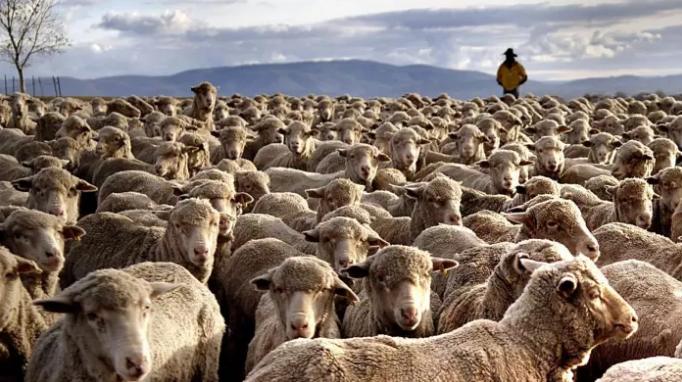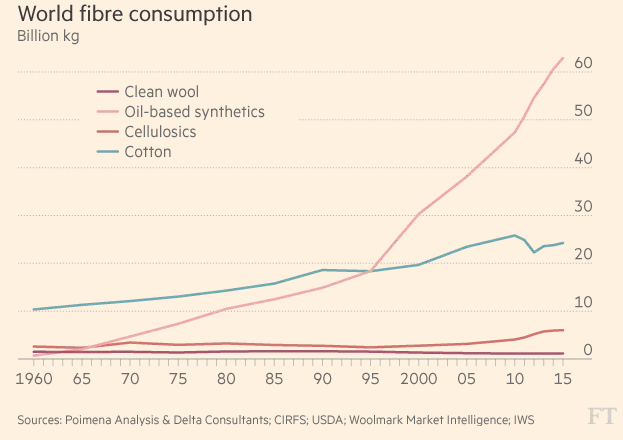Prior to this, according to the Financial Times quoted IWTO (International Wool Textile Organisation) data show that in 25 years, the global net wool production fell by 42% last year, fell to 1 million 160 thousand tons, and as rayon production substitutes has increased 3 times, reaching 6890 tons. Australia naturally cannot survive, the number of Australian sheep has dropped by more than half, down to about 70 million, and wool production has dropped to 325 thousand tons.

A flock of sheep in Australia
Wool exports have been a microcosm of Australia's export superpower for 100 years, the Financial Times reported on February 12th. But since the rise of man-made fibres in the 60s, the wool industry has been challenged.
At present, 70% of the world's high-quality Merino wool comes from australia. 25 years ago, Australia's wool exports amounted to 3 billion 500 million Australian dollars (about 18 billion 470 million yuan), much higher than the other big iron ore.
But as the government kept the price mechanism down in 1991, prices of wool fell all the way, and a major industry fell. According to the Financial Times quoted the IWTO data (International Wool Textile Organisation), 25 years, net global wool production fell by 42% last year, fell to 1 million 160 thousand tons, and as rayon production substitutes has increased 3 times, reaching 68 million 900 thousand tons. Australia naturally can not escape, the number of Australian Mianyang dropped by more than half, down to about 70 million, wool production has dropped to 325 thousand tons.
Fortunately, as China's economy has grown in recent years, the tastes of Chinese consumers have changed dramatically. A wool farmer in Australia told the Financial Times: "wool is a luxury. As people get richer, they want to use higher quality products."".

Changes in sheep populations in Australia

Global fiber consumption trends, top man-made fiber consumption, and the bottom line is wool consumption
As demand from China has risen over the years, Australia's wool supply has begun to recover slowly. The Australian wool exporters Commission (Australian Council of Wool Exporters) chairman Peter - Morgan (Peter Morgan) told the financial times that the current Australian wool exports reached a balanced supply stage looks. Because Chinese consumers have bought 75% of wool production, and have begun to turn to higher quality products.
For Australians, China is more interested in locally made things, which is considered a boutique. "Australia earlier times" reported China visitors to Australia "shopping spree". "Star of Australian wool large Australian wool products company (WOOLSTAR) told reporters that most of the wool raw materials are exported to China processing, but manufacturing in Australia was finished Chinese consumers consider first-class products.
For Chinese consumers, the pursuit of "Australia" manufacturing is not without reason. According to the reference news network last year citing foreign media reports, China's imports of Australian wool increased greatly, but many are used to make "fake fur" coat.

Price per kilogram of wool
Andru Dennis, an independent wool consultant, told Australia Broadcasting Corporation that up to 10 million kilograms of wool - mostly Australian wool - were used to make Faux fur. He said, "it looks like sheep's clothing, but it has no skin on the back, but the knitting texture of wool. They are called fur fabrics because they can be dyed in various colors, similar to fur."."
Reported that, in his view, this is a marketing strategy. They can only be called "artificial fur", not Australian wool or sheepskin.
Finally, the Financial Times said, although the Australian wool industry with the rise of China demand began a slow recovery, per kilogram of wool prices even reached the peak of 14.29 Australian dollars (about 75.4 yuan). But the number of sheep in Australia is still a long way from the small peak in 2011. In addition, China can not reverse the trend of global demand for wool.